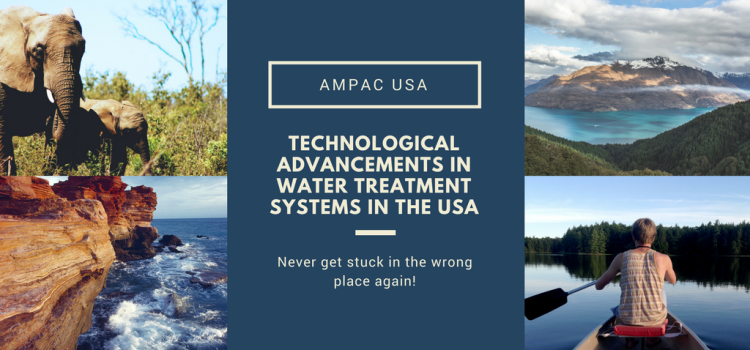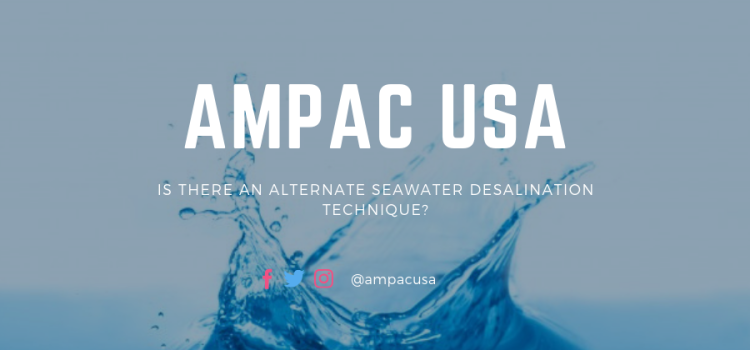Water Treatment Systems in the US are considered one of the most efficient and reliable in the world. Thanks to reverse osmosis, this technology has proved to be a solution to many of our residential as well as industrial level water problems. The struggle for water is a long one. The first evidence of a constructed well for extraction of water can be dated back to almost 10,000 years, even before the invention of the wheel. This well was a source of freshwater for mankind in places where freshwater sources were not easily accessible. It is a transformative invention and is often overlooked. Since all the years passed, the technology of water extraction grew. The pipeline was placed in wells and laid underground across landscapes for transport. As and when the sources started degrading due to the presence of industrial effluents, filtration methods were brought into play. Pj Dore Co. and Ltd released an infographic that suggested that over 360,000 people die each year of water-related diseases.
Soon enough, reverse osmosis was invented for a better way of filtration. Today this method is used in residential filters which are available in every household of the developed nations. It is also a major part of industrial processes and is primary to desalination plants that provide clean drinking water to millions in a day. A research in 2013 by Freedonia suggested that it expected the market of water treatment industry grow by 5.9% and $13 billion till 2017 which certainly was the case.
Effective as it is, it still is unavailable to many areas around the world due to financial reasons. Moreover, there are talks in the scientific arena of coming up with even better advancements, changes or innovations in the current technology in order to make it sustainable. This inference is also a consequence of the intense pressure on the earth’s natural resources.
Current technologies
Currently, there are many filtration technologies used. These include UV radiation and distillation. Most of these, however, have a major setback in their processes and hence are not used individually.
The most widely used technology today is Reverse Osmosis. It works on the basic concept of different levels of pressures. This process involves transferring a solvent from one side of a porous membrane to other in a direction opposite to the natural osmosis. This is done with the help of external hydrostatic pressure which is more than normal osmotic pressure. This passage of the solvent through the membrane is filtered where the contaminants are trapped on the side of the porous material. The process has proven to be effective in eliminating lead, chlorine, organic particles and undesirable salts.
The effectiveness of this process has given birth to a horde of applications for industrial, commercial and household uses. In commercial and household fields, the system eliminates particles to make the water safe for consumption. For industrial purposes, however, this process is used to attain a water quality that can be used in machines and equipment. Aerospace, Marine, Mining, Military, Energy, food and Dairy are just some of the industries where this process finds importance. For every industry, there is a certain water profile required with relevant substances to make the job easier. These different profiles are achieved by different types of porous membranes, levels of hydrostatic conditions and external factors.
Technological advancements
The filtration processes have come a long way since filtration from a cloth. Today technology has advanced further to simply give you quality and safe water at the turning of the tap. No more work is required to gain the benefits of safe drinking water. This innovation has also led to some of the finest technological advances that can be utilized to make the current technology a sustainable one. Some of these are:
- Nanotechnology filtration:
This filtration is made using titanium dioxide for the membrane instead of the conventional polymer. The technology is meant o kill bacteria and break down organic components for ease of filtration. This breakdown is done by ultraviolet rays of the sun which are easily available. The technology helps in resisting bio-fouling and accumulation of organic compounds on the membrane thus saving time and money. - Lifestraw:
This innovation is not used in the U.S. but can have a wide range of applications in the military. It is just a straw and contains one RO membrane and a charcoal filter to eliminate any contaminant from the water that is taken through it. It was developed for the need in the developing nations as RO filters are not necessarily available in the economic conditions. One can use one straw individually and for household purposes too. - Photocatalytic water purification:
This technology is very similar to UV radiation. This process uses the sun rays in contaminated high-speed water to get rid of bacteria and arsenic. It works on the similar lines of chlorophyll which is enabled on detecting sunlight. The UV rays are used to eliminate pollutants at high speed. The UV filtration method is used in several households as a part of RO filters to eliminate microorganisms but sole use of it cannot guarantee safe water as it leaves out the inorganic and organic matter. - Membrane filtration technology:
This technology is by far the only technology that sees a great amount of traction and research. And why not? Once the membrane is made sustainable, the whole reverse osmosis process becomes economical. Latest results imply a decrease in desalinated water costs from $1 to between $0.80 and $0.50 within five years. This can have a huge impact on the costs of desalination water at larger scales. Membranes use ceramic to attain this cost-effectiveness which also has a longer lifespan. Graphite, Biological organisms, and many more substances have been tested to act as membranes for RO filters to get better results. - Ion exchange:
This technology applies the simple scientific fact of exchange between ions to get a filtered solvent which is water. This is especially helpful for people living near sources of water that have a higher level of chemicals. The primary candidates for making this filtration possible are Nitrates, Radium, Barium, Selenium, Lead, Chromate, and Fluoride. This process has limited large-scale applications due to the production of much more waste stream. This waste stream is only 2-5% of the total water being treated but has higher concentrations of NaOH and HCl which when applied on a larger scale can cause a big problem for the environment. - Biological filtration:
There hasn’t been much talk around this as there has been an apprehension on whether microorganisms should be introduced in filtration processes. There are still many unanswered questions as to what filter media type, size, minimum empty bed contact time should be used to ensure the safety. Pilot studies have used GAC (Granular Activated Carbon) or Anthracite as the medium for bio-film. These two substances have a greater impact rather than sand. Studies are being made to produce biologically induced GAC filters that can also reduce the amounts of inorganic pollutants in the water, however; the studies still have a long way to go before being applied at a larger scale.
Conclusion
It has been seen in the past that new technologies gain attention at a slower pace in the water treatment industry. Those past 20 years on a strong contrast have a different picture to present. Technological innovations have skyrocketed and have come into low scale applications very soon. Intense studies research and efforts still need to be put into the industry to get a technology that is sustainable enough to last centuries. The idea is to be able to make safe drinking water available for every person on the planet at a low cost. This is strongly aligned and inspired from the World Health Organization’s (WHO) water quality and health strategy to “attain the highest possible reduction in waterborne and water-related diseases by providing up-to-date, evidence-based guidance and coordination, and support for water, sanitation, and hygiene interventions.”
As an industry, it is important to invest money and finance promising research to be able to make better water treatment system available in the market. Only then can we produce a sustainable system that might stand the test of time.
About Author:
Ampac USA is a manufacturer of water treatment systems used around the globe for quality drinking water. The company has an experience of over 40 years, uses the latest technology to provide a standard, reliable products and works with experts to give the best possible service.










